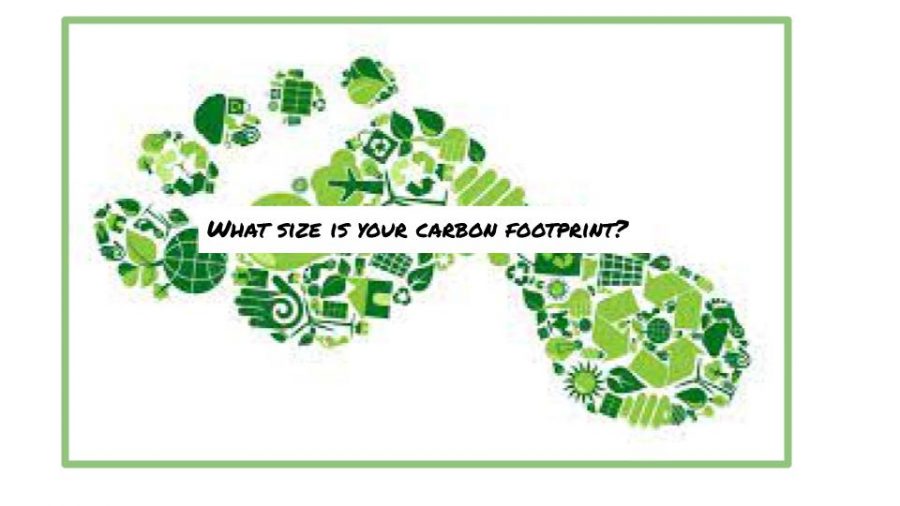What size is your carbon footprint?
A carbon footprint is the amount of carbon dioxide and other carbon compounds one individual or an organization emits into the atmosphere by consumption and use of fossil fuels, electricity, water, and more. These compounds cause a dramatic increase in global warming, as they trap heat in the atmosphere.
Answers vary on the average household carbon footprint in the U.S., as different sources say different numbers ranging from 20 to 80 tons of carbon per household. However, the individual carbon footprint in the US is an average of 16 tons per person. This means the average person emits 16 tons of carbon per year. The Nature Conservancy says that this average needs to be 2 tons of carbon per year to stop global warming.
Elizabeth Nave, environmental science teacher at Oakdale High School, said “It is kind of eye-opening. The minute you click that you live in the United States, there’s only so much you can do to reduce your carbon footprint…”
Carbon isn’t the only compound being tracked in this footprint. Another big problem is food waste, which leads to landfills and large releases of methane, which is more hazardous to the atmosphere than carbon dioxide.
“The more and more that I look at it, food waste is huge. Food waste goes right in the landfill, and the landfills produce methane, and methane is far worse than carbon dioxide,” said Nave.
There are carbon footprint calculators that are supposed to help determine how much carbon and other resources people emit into the atmosphere. There are many different carbon footprint calculators. Some give users the individual footprint while others give the entire household footprint.
Some are very specific, and some are rather vague.
These give varying numbers, based on a questionnaire of how much the person who takes the test drives, how much meat they eat, how much they pay in electricity, water, and more.
One carbon calculator is on the website conservation.org. This calculator asked for housing, the type of food the person eats, whether they recycle, use solar energy, gas mileage, how often they travel, and more. I was given a specific household footprint of 46.31 tons, and the average was listed as 61.17. My given carbon footprint is almost exactly twice Shaquille O’Neal’s shoe size.
Conservation.org has ways to reduce a carbon footprint. These include improving fuel economy, instituting meatless Mondays, flying direct, taking the bus, purchasing consignment clothing, and changing the thermostat.
I don’t fly much. I’m not going to give up meat, and there aren’t too many buses I can take anywhere. This is the problem with changing a lifestyle.
The second calculator, from The Nature Conservancy, asked for similar answers, except they asked exactly how much money is spent on electricity, water, gas. This one listed my household carbon footprint as 66 tons, with the average one being 85. This calculated my family being responsible for 20 tons MORE than the previous calculator.
The Nature Conservancy’s ways of reducing carbon footprint include using a more efficient vehicle, telecommuting to work, riding a bike, taking public transportation, turning off lights, using rechargeable batteries, switching light bulbs, and going organic.
I guess we could buy a different car. Our Dodge Durango gets about 25 mpg on the highway. We turn off lights, but thing is, I feel like most people already turn off the lights when they aren’t using them.
Doing a carbon footprint calculator is an interesting experiment, but, overall, I don’t think they will drive too much change, because some of the ways they have to reduce carbon footprint are miniscule, unable to be done for some, or just not realistic.
This creates awareness, but not change. What can students do to change the direction of this problem?






